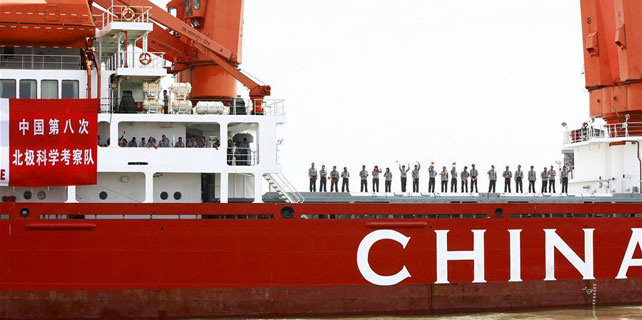Cooperation key to rebalancing China-US trade
WASHINGTON - Continued cooperation and consultation are key for both Beijing and Washington to rebalance and strengthen economic ties.
Such an approach, now and for the future, is necessary for the world's two largest economies amid a sluggish global economic recovery and a surge in anti-globalization sentiment. A timetable and a roadmap for cooperation produced from the first round of their Comprehensive Economic Dialogue illustrates how committed both sides are to coping with new changes.
The two sides have agreed to focus on macro-economic policy, trade, investment as well as global economic governance.
The consensus reached on the services trade is expected to foster new growth points. Beijing's willingness to expand market access further as required by Washington is expected to promote trade balance.
For the US side, the huge surplus for China in bilateral trade has been a big headache and was a focus of the July 19 dialogue of high-level officials.
China now accounts for around 70 percent of the US trade deficit. However, the imbalance has not come as a result of unfair policies, but as a natural product of globalization and free trade. Moreover, the US trade deficit is largely exaggerated, and homemade.
In fact, current trade balances don't adequately capture the complex nature of international trade today, as quite often goods move across multiple national borders to reach the final market. As China is at the end of the international supply chain, its exports to the United States include values imported from the latter and other countries.
A study by economists with Federal Reserve Bank of Dallas shows that using a value-added approach to measure bilateral trade reduces the US-China trade imbalance by 33 percent in 2013.
Meanwhile, as a trade deficit is the flip side of capital surplus, it indirectly fills the gap of domestic savings and investment.
Stephen Roach, a senior fellow with Yale University, said, "lacking in savings and eager for growth, the US relied heavily on China's vast reservoir of surplus savings to make ends meet." China's huge stake in US treasuries has helped the latter fund record budget deficits.
China and the United States have built prosperous and reciprocal economic relations over the past few decades. A codependence, with China producing more and the United States consuming more, still does more good than harm, lifting millions of Chinese from poverty and allowing Americans to spend less.
The bilateral trade volume exceeded $550 billion in 2016, representing an increase of more than 200 times from over 30 years ago. By the end of last year, two-way investment totaled more than 170 billion dollars. Chinese investments across the United States have directly created 141,000 jobs.
Pragmatic cooperation of mutual benefit and deepening exchanges aided with more dialogue to ease tension will help China and the United States avoid a trade war and enable their economic relations to contribute more to their own growth and the global economy.
















